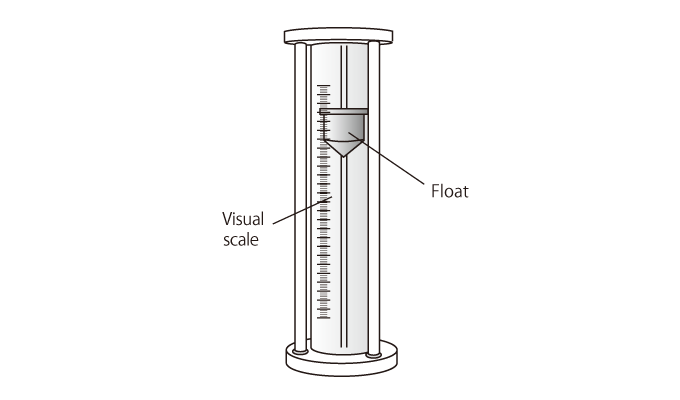Principles and features of floating element flow meters
Various types of flow meters and flow sensors are available. This section summarizes the principles and features of floating element flow meters.
This is classified as an area flow meter. Its mainstream method involves suspending a float in a tapered pipe (a pipe that progressively widens heading upwards). When the fluid is forced in between the tapered pipe and the float, a differential pressure is generated. When this happens, the float stops at an area where the upward force caused by differential pressure and the downward force caused by the weight of the float have been equalized. The resulting display is the instantaneous flow.
Commonly, the tapered pipe is manufactured from transparent materials calibrated for flow and measurements are read directly from the pipe. There are also types available that have a magnet built into the float and perform detection using a magnetic sensor.

FLOATING ELEMENT FLOW METER
| PROS |
・Able to detect gases, liquids, and vapors ・Generally low priced ・Comparatively low pressure loss |
|---|---|
| CONS |
・Does not offer very high accuracy ・Not suited for fluids that include solids (clogging will occur) ・With the directly-read type, the float cannot be seen if the tapered pipe becomes dirty (frequent maintenance required) |
CHAPTER 2
FLOW METER TYPES & PRINCIPLES
CHAPTER 2
FLOW METER TYPES & PRINCIPLES
